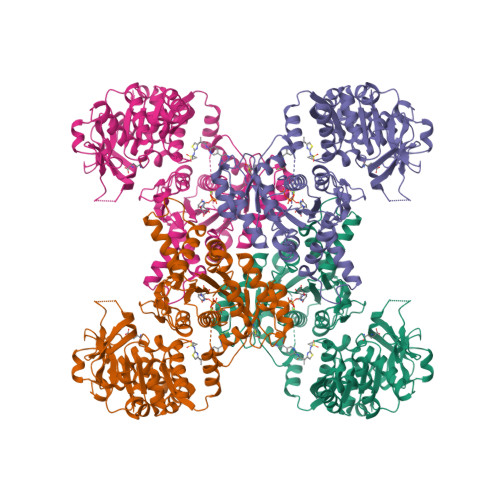
Top ▲

GtoPdb is requesting financial support from commercial users. Please see our sustainability page for more information.
Gene and Protein Information  |
||||||
| Species | TM | AA | Chromosomal Location | Gene Symbol | Gene Name | Reference |
| Human | - | 591 | 1p34.2 | CTPS1 | CTP synthase 1 | |
| Mouse | - | 591 | 4 56.52 cM | Ctps1 | cytidine 5'-triphosphate synthase 1 | |
| Rat | - | 591 | 5q36 | Ctps1 | CTP synthase 1 | |
Previous and Unofficial Names  |
| cytidine 5'-triphosphate synthase | Ctps | cytidine 5'-triphosphate synthase | cytidine 5'-triphosphate synthetase | uridine triphosphate aminase |
Database Links  |
|
| Alphafold | P17812 (Hs), Q922Y4 (Mm) |
| BRENDA | 6.3.4.2 |
| Ensembl Gene | ENSG00000171793 (Hs), ENSMUSG00000028633 (Mm), ENSRNOG00000009963 (Rn) |
| Entrez Gene | 1503 (Hs), 51797 (Mm), 313560 (Rn) |
| Human Protein Atlas | ENSG00000171793 (Hs) |
| KEGG Enzyme | 6.3.4.2 |
| KEGG Gene | hsa:1503 (Hs), mmu:51797 (Mm), rno:313560 (Rn) |
| OMIM | 123860 (Hs) |
| Pharos | P17812 (Hs) |
| UniProtKB | P17812 (Hs), Q922Y4 (Mm) |
| Wikipedia | CTPS1 (Hs) |
Selected 3D Structures  |
|||||||||||||

|
|
||||||||||||
Enzyme Reaction  |
||||
|
||||
Download all structure-activity data for this target as a CSV file 
| Inhibitors | |||||||||||||||||||||||||||||||||||||||||||||||||||||||||||||||||||||||||||||||||||||||||||||||||||||||||||||||||||
| Key to terms and symbols | View all chemical structures | Click column headers to sort | |||||||||||||||||||||||||||||||||||||||||||||||||||||||||||||||||||||||||||||||||||||||||||||||||||||||||||||||||
|
|||||||||||||||||||||||||||||||||||||||||||||||||||||||||||||||||||||||||||||||||||||||||||||||||||||||||||||||||||
| View species-specific inhibitor tables | |||||||||||||||||||||||||||||||||||||||||||||||||||||||||||||||||||||||||||||||||||||||||||||||||||||||||||||||||||
| Immunopharmacology Comments |
| CTPS1 is critical for the proliferation of lymphoid cells [3]. Reduced expression/function of CTPS1 causes an immunodeficiency that is characterised by the failure of T and B cell proliferation in response to infection [2]. It is hypothesised that selective targeting of CTPS1 by pharmacological inhibitors may provide a mechanism to reduce aberrant immune cell proliferation in inflammatory/autoimmune conditions and haematological malignancies. |
| Immuno Process Associations | ||||||||||||
|
||||||||||||
|
||||||||||||
|
1. Lynch EM, DiMattia MA, Albanese S, van Zundert GCP, Hansen JM, Quispe JD, Kennedy MA, Verras A, Borrelli K, Toms AV et al.. (2021) Structural basis for isoform-specific inhibition of human CTPS1. Proc Natl Acad Sci U S A, 118 (40): e2107968118. [PMID:34583994]
2. Martin E, Minet N, Boschat AC, Sanquer S, Sobrino S, Lenoir C, de Villartay JP, Leite-de-Moraes M, Picard C, Soudais C et al.. (2020) Impaired lymphocyte function and differentiation in CTPS1-deficient patients result from a hypomorphic homozygous mutation. JCI Insight, 5 (5): e133880. [PMID:32161190]
3. Martin E, Palmic N, Sanquer S, Lenoir C, Hauck F, Mongellaz C, Fabrega S, Nitschké P, Esposti MD, Schwartzentruber J et al.. (2014) CTP synthase 1 deficiency in humans reveals its central role in lymphocyte proliferation. Nature, 510 (7504): 288-92. [PMID:24870241]
4. Novak A, Laughton D, Lane R, Blackham E, Thomas J, Chatzopoulou E, Wrigglesworth J, Quddus A, Ahmed S, Cousin D et al.. (2022) Discovery and Optimization of Potent and Orally Available CTP Synthetase Inhibitors for Use in Treatment of Diseases Driven by Aberrant Immune Cell Proliferation. J Med Chem, 65 (24): 16640-16650. [PMID:36449304]
Nucleotide turnover: CTP synthase 1. Last modified on 23/08/2023. Accessed on 12/07/2025. IUPHAR/BPS Guide to PHARMACOLOGY, https://www.guidetopharmacology.org/GRAC/ObjectDisplayForward?objectId=3215.